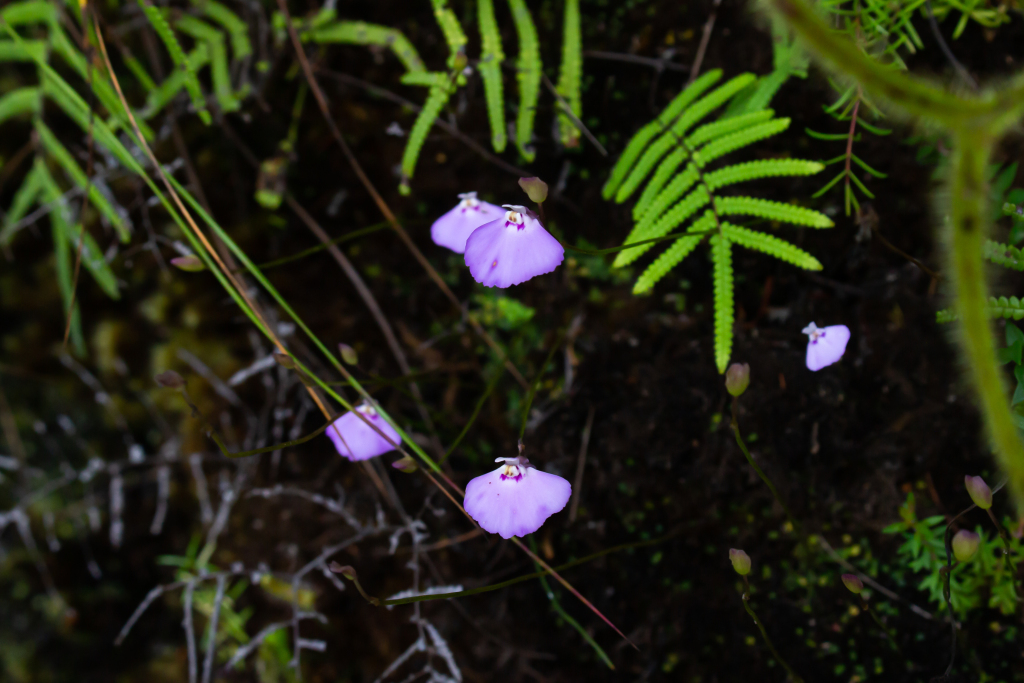Utricularia uniflora
R.Br. Single BladderwortTerrestrial, probably perennial; stolons present. Leaves few, obovate, 4–8 mm long, 1–2 mm wide. Traps few on stolons, globose, 0.8–1.5 mm long. Raceme solitary, erect, 4–30 cm long, 1- or 2-flowered; sterile bracts absent; fertile bracts c. basifixed, ovate, c. 3 mm long; bracteoles similar to bracts; calyx-lobes unequal, upper lobe ovate, 3–6 mm long, lower lobe broad-ovate or oblong-elliptic, shorter. Corolla 9–15 mm long, mostly mauve or lilac; upper lip obovate, emarginate; lower lip much larger, broad-ovate, with 8–10 short longitudinal ridges, the central 2 yellow, lateral ones white; palate pubescent; spur cylindric, c. as long as lower lip, apex rounded. Capsule globose, c. 3 mm diam.; seeds obovoid to ellipsoid, 0.3–0.4 mm long. Flowers mostly Sep.–Jan.
LoM, GleP, MuF, GipP, OtP, CVU, GGr, DunT, NIS, EGL, WPro, HSF, HNF. Also Qld, NSW, Tas. In Victoria possibly confined to far East Gippsland with an old collection simply labelled 'Port Phillip' of doubtful provenance. Grows in bogs and along rocky stream banks at low or moderate altitudes.
Jeanes, J.A. (1999). Lentibulariaceae. In: Walsh, N.G.; Entwisle, T.J., Flora of Victoria Vol. 4, Cornaceae to Asteraceae, pp. 547–553. Inkata Press, Melbourne.
 Spinning
Spinning

